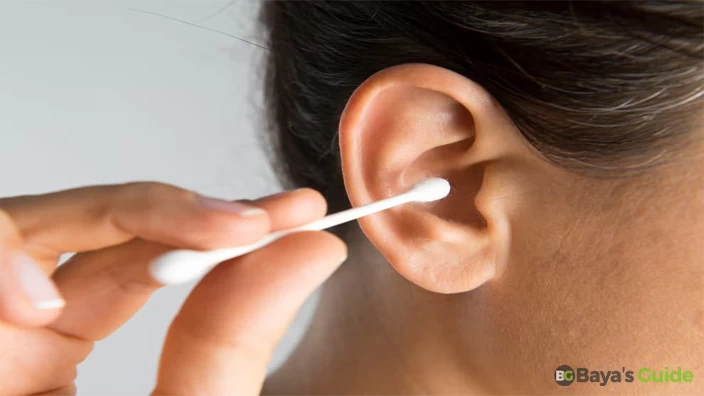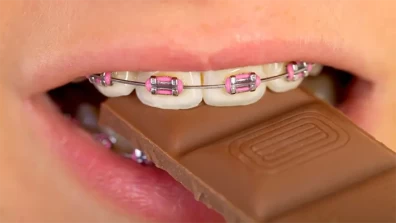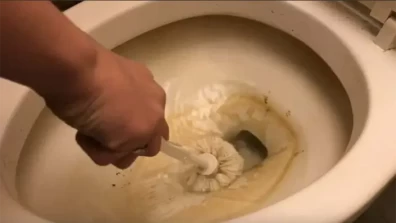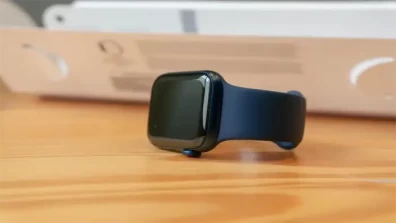Ear wax, medically known as cerumen, is a natural substance produced by the glands in our ear canal. Ear wax is a part of your body’s immune system, and it protects your ears from impurities, such as bacteria. It serves as a protective barrier, trapping dust and foreign particles, and preventing them from reaching the eardrum. Ear wax grows in the ear, it can cause pain, soreness, irritation, stone deafness, other hearing problems, and many threatening infections.
However, excessive ear wax build-up can lead to discomfort and hearing problems. In this article, we will provide you with a safe and effective step-by-step guide on how to massage pesky ear wax out carefully at home.
Table of Contents
- Important Points You Need To Know
- 1- Gather Supplies
- 2- Soften The Ear Wax
- 3- Outer Ear massage
- 4- Use Natural Oils
- 5- Use A Bulb Syringe
- 6- Warm Water
- 7- Ear Wax Cleaning Kit
- 8- Dry Your Ear
- 9- Hydrogen Peroxide
- 10- Using A Saline Solution
- 11- Ear Wax Suction
- 12- Ear Irrigator
- 13- Ask For Prescription Drops
- 14- Medical Ear Evacuation
- Risks Of Removing Ear Wax Yourself
- Signs Of A Ruptured Ear Drum
- Frequently Asked Questions
- Conclusion
Important Points You Need To Know
When massaging ear wax, remember to rub gently in a circular motion towards the base of your ear. Avoid swift and forceful movements, especially when moving your mouth. To effectively remove the wax, it's advisable to moisturize your ear using home remedies like warm water, antifungal ear drops, Petroleum jelly, almond oil, hydrogen peroxide, or any solution as per your doctor’s guidance. We have discussed more about these methods in the next part of our conversation.
1- Gather Supplies
Before you begin, gather the necessary supplies: a bulb syringe, warm water, a dropper, and mineral oil or hydrogen peroxide.
2- Soften The Ear Wax
Start by softening the ear wax. You can do this by placing a few drops of mineral oil or hydrogen peroxide into your ear using a dropper. Let it stay inside for a few minutes to loosen the wax.
3- Outer Ear massage
After that, buff your outer ear so as to make the ear wax wobbly and detached. Then, you can press the ear base with your finger moving slowly in a circular and dislodge the ear wax from the ear sides and ear canal. This is the best way to soften the ear wax while adding some other home remedies like Vaseline, warm water, or recommended ear drops.
4- Use Natural Oils
You need to prefer to pour soft baby oil into your ear and tip your top. You can use this oil therapy for2 to 3 days so that all the ear wax gets soft and easily comes out of your ear. Remember, after straightening your head, you may notice some extra oil running out of your ear, use soft fabric, or towel tissue to wipe the excess oil from your ear surround.
5- Use A Bulb Syringe
Fill a bulb syringe with lukewarm water. Tilt your head to the side and gently pull your earlobe backward and upward to straighten your ear canal. Insert the syringe’s tip into your ear canal and squeeze the bulb to release a gentle stream of water. This will help flush out the softened wax.
6- Warm Water
Warm water is great to soften and flush the earwax out. With the help ofa bulb syringe fill it up with warm water. After squeezing the warm water into your ear slowly and gradually, lean your head on one side and then pull your ear pinna so that the ear canal will open. Then, flush out your ear wax tipping your head aside to let the cerumen flow out of the ear.
- If you are cleaning your ear after a long time, then irrigate the ear 2/3 times with warm water as it changes into clots very often.
- However, you can make a saline solution if you cannot clean your ear with plain water satisfactorily.
7- Ear Wax Cleaning Kit
Ear wax cleaning kit is available with a spiral tool and spring. Thisskid-resistant ergonomics can clean your ear canal while soothing you in the earache and ear-itching. You can buy this kit over the counter with drops that you can pour 1 to 2 blobs and let them stay for 1 minute in your ear canal without moving your head. Later, let the fluid drain out from your ear. The otolaryngologists highly recommend Debrox.
You Might Also Like: How To Clean A Dog Wound
8- Dry Your Ear
After removing the ear wax, gently dry your ear with a clean, dry cloth. Make sure to tilt your head to allow any remaining water to drain out.
9- Hydrogen Peroxide
This home remedy is a professional procedure that is also applied in medical institutions to root out stubborn ear wax buildup. Be mindful, this technique is employed only by a trained healthcare holder. He uses a bulb syringe filling up hydrogen peroxide, an extraction tool with warm water to remove the ear wax buildups.
With the help of a dropper, pour 1 to 2 blobs of hydrogen peroxide into your ear lying on the side. Hydrogen peroxide is a mild antiseptic that is chiefly used for non-medical situations like disinfecting, mouth irritation, stain removal, and ear cleaning. After dropping massage your ear with a soft touch tilting your head side by, and letting it drain out. Let the hydrogen peroxide exude out thoroughly of the ear then spruce your ear canal up with unmutilated warm water.
Take into consideration that it can cause redness or skin inflammation sometimes, then rinse your ear without any delay.
10- Using A Saline Solution
Saline Solution also known as hydrotherapy is a concentration of sodium chloride and tap water. To help remove the ear wax, the utilization of saline solution may turn out as a beneficial home remedy, take a half glass of cozy water, and blend a teaspoon of table salt. Mix it well until it solvates. Using an eye dropper, pour a few drops of concentrated fluid and let it stay in your ear canal. Somehow, it may not be effective in case of severe blockages.
Note: avoid using it frequently as it may cause a permanent risk of irritation.
11- Ear Wax Suction
Ear wax suction is a safe syringing method undertaken by audiologists or some healthcare professionals for eliminating the willful and mulish wax build-up in your ears. You can use a suction tool to remove stubborn blockages of ear wax efficiently and carefully.
In this procedure, a thin vacuum is inserted in your ear to dislodge the ear wax from your ear canal with a squeaking sound. Be watchful while applying this syringing technique as it can cause severe damage if you use it without some proper training.
12- Ear Irrigator
In the Ear irrigation procedure, there is a fast pressure of warm water to wash out the ear canal. You may find this ear irrigator device from a pharmacy near town. Moreover, you need to stream a gush of cozy water into your ear canal to pluck off and finally remove the wax. Beyond a doubt, this method is functional if done with minute care as it can affect your eardrum. Mind it, don’t apply this procedure if you are already suffering from some medical condition or ear problem.
13- Ask For Prescription Drops
If you have tried and tested home remedies for your ear cleaning seeing no difference at all, you must consult your doctor or your family ENT. You can purchase the pharmaceutical-grade ear wax drops prescribed by your ENT specialist from your nearby pharmacy. They are completely safe for your ears and equally potent for ear wax cleaning that removes the wax from your ear naturally after softening it and plucking off from all ear sides.
14- Medical Ear Evacuation
After letting the wax in your ear uncleaned, it gets stubborn and can’t be removed by applying home remedies. In that case, you need to visit directly your otolaryngologist as a last resort. He will assess the symptoms and causes of ear irritation and finalize what type of treatment is needed for your ear issue. He can gently and safely remove the ear wax using a metal extraction tool without letting your ear canal be injured or damaged.
Risks Of Removing Ear Wax Yourself
Removing ear wax yourself can be risky and potentially harmful. Here are some risks associated with the self-removal of ear wax:
1- Damage To The Ear Canal
Inserting objects employing excessive force like cotton swabs, hairpins, or even your finger into the ear canal can push the earwax further inside which can potentially cause injury to the delicate ear canal lining. Avoid inserting the soft tissues even in your ear canal. These tools can cause bleeding, severe pain, or any mutilation to your ear canal or ear drum.
2- Impaction
Attempting to remove earwax without proper knowledge and tools can lead to earwax impaction. After that, removing the ear wax becomes a hard nut to crack. Deeply pressed earwax can wrongly block the ear canal completely which may cause your ears weight loss, ear pain, and even dizziness.
3- Infection Or Ear Inflammation
Inserting objects into the ear can introduce bacteria, leading to ear infections as they are not properly sterilized. The ear canal is a sensitive area, and introducing foreign objects increases the risk of infection, ear irritation, or bacterial growth.
4- Allergic Reactions
Sometimes, people pour certain solutions and oils to soften the ear wax to remove it, but they are not aware of being oil allergic. It can cause inflammation, severe itching, or swelling. It’s quite safe to use natural oils first.
5- Tympanic Membrane Perforation
Incorrect methods of earwax removal can result in a perforated eardrum. Perforation is a way to pluck off the blockage by piercing which can lead to ear infections, hearing loss, and other complications.
6- Loss Of Hearing
Mishandling earwax removal can inadvertently push the wax deeper. So, it leads to more significant hearing issues. It's crucial to remove earwax from clogged ears safely and effectively to maintain proper hearing health.
7- Consult An ENT Specialist
Treating your ears with home remedies is effective but it shouldn’t be done without proper training. If you have concerns about earwax buildup or experience symptoms like hearing loss, ear pain, or dizziness, it's best to consult a healthcare professional or an ear, nose, and throat (ENT) specialist. They can safely remove the earwax and provide appropriate guidance on maintaining ear health.
Signs Of A Ruptured Ear Drum
These are certain signs of a ruptured ear drum due to which you must seek medical treatment immediately. They may include:
- Inflammation, Pain, Itching, Or Irritation.
- Squeaking Or Buzzing In The Ears
- Hear Loss Or Improper Hearing.
- Blood Or Fluid Discharge From The Ear
Frequently Asked Questions
How To Massage Ear Wax Out By Using Natural Oils?
Using natural oils to soften earwax can be a gentle way to facilitate the natural process of earwax migration out of the ear canal. Here's a safe method you can follow:
- You can use mineral oil, baby oil, olive oil, or hydrogen peroxide. Make sure the oil is at room temperature, as cold oil can cause discomfort.
- If you're using olive oil or another thick oil, warm it slightly to body temperature by placing the oil container in warm water for a few minutes.
- Lie down on your side with the affected ear facing upward. This allows the oil to penetrate the ear canal more effectively.
- Use a clean dropper to place 2-3 drops of the warmed oil into your ear.
- Gently pull your earlobe a few times to help the oil reach inside the ear canal.
- Stay in the same position for 5-10 minutes to allow the oil to soften the earwax.
- After waiting, tilt your head to the opposite side to let the oil and softened wax drain out.
- You can use a tissue and damp cloth to gently catch any dripping oil.
- If your symptoms persist, you can repeat this process for a few days.
Note: Remember, this method is suitable for softening earwax, but if you suspect a more severe blockage or if you have ear pain, it's essential to seek medical advice from a healthcare professional. They can safely remove the earwax and provide appropriate guidance for your specific situation.
How Can I Open My Blocked Ear At Home?
If you feel your ears blocked or plugged when you’re talking, swallowing food, yawning, or chewing hard food stuff or bubble gum till your open eustachian tubes are opened broadly. These tubes conjoin your nasal-sinus cavity with the middle ear and get afflicted. So, you need to take a deep breath while you’re trying to pinch your nostrils blocked. Also, try to keep jaw your tightly closed. After this, try to hear your noise popping up – it means you have succeeded in opening your blocked ear on your own at home.
When To See A Doctor For Ear Wax?
Excessive earwax has become a routine issue through which almost every person is suffering at some point. In mild cases, you can use the home remedies given above in the article to root out the ear wax blockage. But in case of Cerumen impaction or excessive ear wax, you must visit a professional health care provider at the very moment without a single delay:
- Impaired & sudden hearing. dizzying, buzzing, severe pain, infection, and a punctured eardrum, you must immediately visit the doctor.
- When you feel ear wax hardened it cannot be removed easily at home. Plus, it is causing pain or a burden on your ears.
- If your ear is discomforting, extracting a foul stink or stinky fluid or sometimes it releases blood.
- In case, you are suffering from poor ear function which can lead your ear to paranoia eventually.
- On condition that you have a history of some structural ear abnormality, or you have already performed surgery on the nose, throat, or ear.
In such conditions, don't try any remedy on your own rather consult an audiologist, or ENT specialist there and then.
Conclusion
Removing ear wax at home can be a straightforward process when done correctly and safely. By following these steps and being gentle, you can effectively massage ear wax out and maintain your ear health. Remember, if you encounter any difficulties or discomfort, don’t hesitate to seek professional medical assistance.























